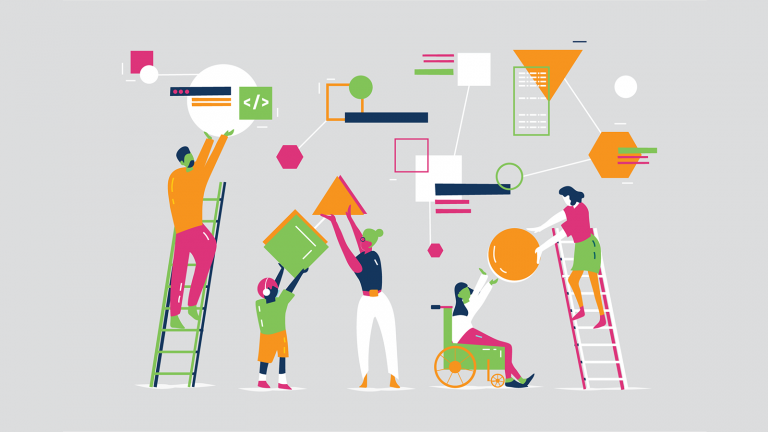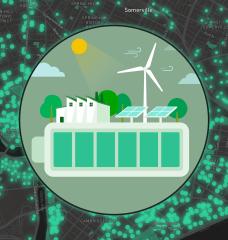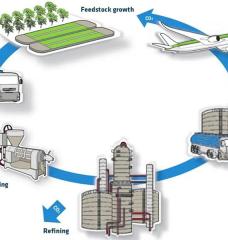
Never before in history has innovation offered promise of so much to so many in so short a time.
Observing the greater promise of exciting technological advancement, Bill Gates expressed his optimism on technological innovation. He could not be truer especially when the world is experiencing avant-garde technical advancement in the manufacturing industry. In parallel, the United Nations conceived the Sustainable Development Goals (SDG) under Agenda 2030. One important element connecting the SDG to technological innovation is the introduction of Fourth Industrial Innovation (4IR), especially Industry 4.0. This convergence of technology-development nexus could not be more appropriate as industrialization, development in infrastructure and technological innovation are the most viable means of achieving sustainable growth in the manufacturing industry and thus the goals of Agenda 2030.
In the age of transformational development, different nations are facing unique challenges. While the developing and under-developed countries are still battling pro-poverty factors such as malnutrition and hunger, developed countries are suffering from poor manufacturing process and archaic production & management system. Although the two cases are seemingly different, this produces a vicious circle of poverty and poor manufacturing process for the world as a whole (each element leads to another):
- Impoverished life standard,
- Less investment in the manufacturing industry,
- Very limited investment in vocational training,
- Low production from unskilled manpower,
- Increased import dependency, and
- Poor per capita GDP and increasing inequality.
However, an ‘optimistic path’ can lift one billion people out of extreme poverty by 2030. It is beyond clear that the real world ‘optimistic path’ can be achieved through none other than the successful adoption of the comprehensive SDGs as the goals measure the global problems from poverty and inequity to increasing energy demand and climate changes. However, the social changes and technological mobilization will require the equal growth of innovation and improved manufacturing process which is also clearly included in the Agenda 2030.
The Role of Industry 4.0 in achieving the SDGs
The radical transformation of the labor-oriented mechanical production process to the industrial production through the digitized and integrated but inclusive and automated smart factory is the newest frontier of cyber-physical manufacturing production. This extremely timely and interactive industrial platform is known as Industry 4.0.
On the other hand, development of industry, infrastructure, and promotion of innovation are the core of the SDG Goal 9 (Industrial innovation and infrastructure). With rising economic growth, manufacture industries are booming and so are new industries supporting information & communication technologies. The benefits come in the form of promotion of sustainable industries, investment in research & innovation (R&D) and motivation & opportunity for entrepreneurship. The role of Industry 4.0 for achieving the growth in the industry, infrastructure, and innovation can be surmised within the bracket of Industry 4.0 characteristics as follows:
- Vertical networking and integration of smart technologies,
- Horizontal integration via a new generation of global value chain networks,
- Process reengineering through the revamped value chain, and
- Advancement through exponential technologies.
Resilient Infrastructure
Infrastructure is the key factor in development. The recent global economic boom has been intensified due to investment reprioritization from the agriculture sector to the manufacture & service industry. The manufacturing and production processes have become even more competitive with the rise of issues like climate change, mass transit, energy transition and water & food shortages. Industry 4.0 will put its positive role in infrastructure development throughout the development of these global issues.
Inclusive and Sustainable Industrialization
The capacity of microchips, bandwidth, and computers doubles every 18 months. This applies to other technological development and by default pushes the manufacturing industry to embrace the smart factory environment by 2030. Already the annual current level of digitization is 54% and consumer’s expectation of digitization in the next five years exceeds 88%. If the trend continues, industrialization will boost its industry’s share of employment, entrepreneurship, and GDP. For example, by 2030 the top seven industrialized countries will observe an average 1.62% of additional economic growth.
Innovation Promotion
Innovation in process and business reorientation are the heart of Industry 4.0. As the global business operations are about to be integrated into a seamless digital world, it is high time the developed and developing countries invest more in R&D expenditure for sustainable and transitional innovation. The direct correlation between investment in innovation and revenue generation shows that the top innovative companies grow 11.3% year-on-year (YoY) compared to only 3.2% of the least innovative companies.
In the case of service innovation, more value offering but lower-cost models offer greater revenue generation and lower operating margin with the help of smart factory, cloud-based services, and industrial internet. The global innovation industry spends $907 billion per year, compared to $421 billion saving - causing 3.6% cost reduction. This is being enabled by shorter operational lead time, maximum product quality, and higher asset utilization.
On the other hand, engineering in process innovation revamps the entire value chain. It also offers additive manufacturing innovation such as 3D printing which makes complex industrial processes easier. The revamped supply chain is noticeable through the development of deep seaports, multilateral conveyer belts, and better inventory & warehouse management.
The Role of the Quantum Leap of Transformation for Agenda 2030
This Agenda 2030 is the plan of action for people, planet and prosperity which is designed to be implemented within the boundary of SDGs. The vision encompasses the welfare of human and development of the whole world through a collaborative partnership.
The role of Industry 4.0 can be explained by taking each of the elements into consideration:
People
With the increase in population, the world is facing issues such as poverty and hunger. Industry 4.0 not only provides the solution for extreme poverty but raises the potential of dignity and equality in a healthy environment. The interaction between industry 4.0 and human capital can be summarized as follows:
- Smart factory,
- Business web
- Enterprise resource planning (ERP)
- Adaptive logistics
- Centralized control
- Social and virtual web
- Smart mobility
- Internet of People,
- Internet of Services,
- Internet of Things, and
- Internet of Data.
The people dimension can further be extended to issues related to revolving welfare, i.e., relationship buildup, welfare, and empowerment. The following roles of Industry 4.0 define the people dimension of the Agenda 2030:
- Focus on people and culture to drive transformation,
- Job-specific skill development with augmented precision,
- Awareness of improved life standard, and
- Increase in per-capita income and longevity.
Planet
The theme such as Save the World, Ecosystem Conservation, Earth First, and Greenpeace are now focusing on one objective: Preserving the Earth. Aside from the environmental concern, Agenda 2030 also measures the sustainable consumption and production of natural resources.
To fight the global climate change and to proceed through advanced manufacturing, the global economic powerhouses are already leading the industrial revolution. The developing countries are also utilizing their human resources and raw materials abundance.
With a conservative projection, the industrial revolution is now happening in 9 major industrial countries and 26 developing countries. With increased globalization, developing countries are now expanding their research and innovation bases in home cities while manufacturing hubs are being established in the underdeveloped and developing countries because of cheap labor and availability of raw materials. In this sense, the decentralization process is the inevitable output of industrialization which follows the trend of customer-specific adaptation and miniaturization.
Aside from decentralization, Industry 4.0 offers:
- More incentive for the global village;
- Flexible and tailored production leading to wider product and service choice;
- Increase in process and business innovation for seamless regional advancement;
- Increase in use of urban greenery and eco-friendly environment;
- Optimization of natural resources and promotion of alternative energies;
- Fighting climate change through a synergistic and concerted approach.
Prosperity
The prosperity perspective of Agenda 2030 encompasses the factors that directly or indirectly affect the welfare of humanity and the world which can be achieved through socio-economic and technological progress. The industrial revolution leads prosperity through caring about the natural habitat and energy preservation. The industrial revolution promotes less use of environmentally damaging chemicals and more use of green and eco-friendly energy. The post-urban concepts of green model towns and urban greenery are the earliest forms of urban prosperity. Some of the noticeable benefits resulted from the Industry 4.0 are defined as:
- Better healthcare system and life standard,
- Increased digitization and automation leading to less predictability and optimized use of human capital,
- Alternative urban greeneries and eco-friendly habitats,
- Increased public service standard and infrastructure development, and
- Decrease in poverty through augmented human capital.
Conclusion
With its ubiquitous and inclusive presence in the modern era of the manufacturing process, Industry 4.0 is the linchpin to the industrial revolution which focuses more on symmetric parallelization of work, process, environment, and people. The world is enjoying the benefit of decreased manual labor, higher production and augmented precision through the early stage Industry 4.0 tools such as advanced cybernetics, autonomous robot & drone, biotech, 3d printer & sensor, and sustainable alternative energy.
All the advancement is pointed towards the greater good of the world, its people and environmental system. And none other than the Agenda 2030 has ever contemplated and put more emphasis on the abovementioned themes. The plans to achieve an integrated but sustainable infrastructure, innovation and industrial development under the Industry 4.0 is the most appropriate better tool for implementing the SDG goals. While we still are in the early stage of the fourth industrial revolution, the global manufacturing industry under Industry 4.0 will surely be contributing more to the goals and targets of the SDG Agenda by 2030.






